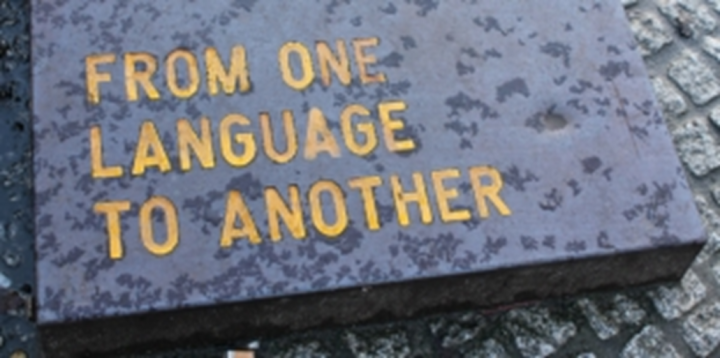How early multilingual speakers categorize space
Franka Kermer 17 May 2023

Language provides an intriguing window into our minds. Investigating the relationship between language and cognition among multilinguals allows us to chart out phenomena that reflect cognitive and conceptual tendencies conditioned by their specific language backgrounds. One of the most fascinating aspects at the intersection of language and thought is the study of space. Being able to find objects in the world and describing where objects are can be regarded as basic skills for any competent speaker of a language. However, languages diverge strikingly in the way they organize spatial meanings, for example, in the spatial frames of reference they use.
In English, we talk about cups being on tables, handles being on walls and fruit being in bowls, whereas in German, three different prepositions (auf, an and in) would be used to talk about these three different situations. And Finnish partitions the handle-on-door and apple-in-bowl situations together, but separates these from the cup-on-table. Furthermore, the English preposition on encodes a relationship that is encoded by two separate words in German (and other languages): German an refers to instances of support involving attachment, whereas auf refers to support that can occur without attachment, as in der Becher auf dem Tisch (‘the cup on the table’).
Experience in one language can lead to changes in an individual’s categorization tendencies, which can in turn affect the way a person refers to that experience in another language. So, children who speak German, English and Finnish, for instance, must learn what the semantic categories are for on, in, auf, an etc., compared to any conceptual categories they may have set up based on nonlinguistic information and experience. Although infants start out with much the same conceptual representations for space in their first year, they will start to follow different paths as they learn how their language maps the conceptual domain of space. They may even express spatial relationships in a way that indicates first, second or third language influence on how they construe and categorize these relationships. This begs some interesting questions: Do the concepts in LA impose themselves on LB and LC in the multilingual user’s mind? Or do the multilingual systems converge, that is, do multilinguals create unitary conceptual categories that incorporates characteristics from LA, LB, and LC?
This new research idea of mine attempts to tackle these questions by studying multilingual children in Finland who are exposed to at least three languages from birth. The participants are ideally young children without any formal language education, who would be tested in an experiment-type setting. I would be interested in how they refer to objects in space in their languages, and whether there is any influence from one language to another, on a syntactic but also conceptual level. I’m hoping to be able to embark on this new path soon!
